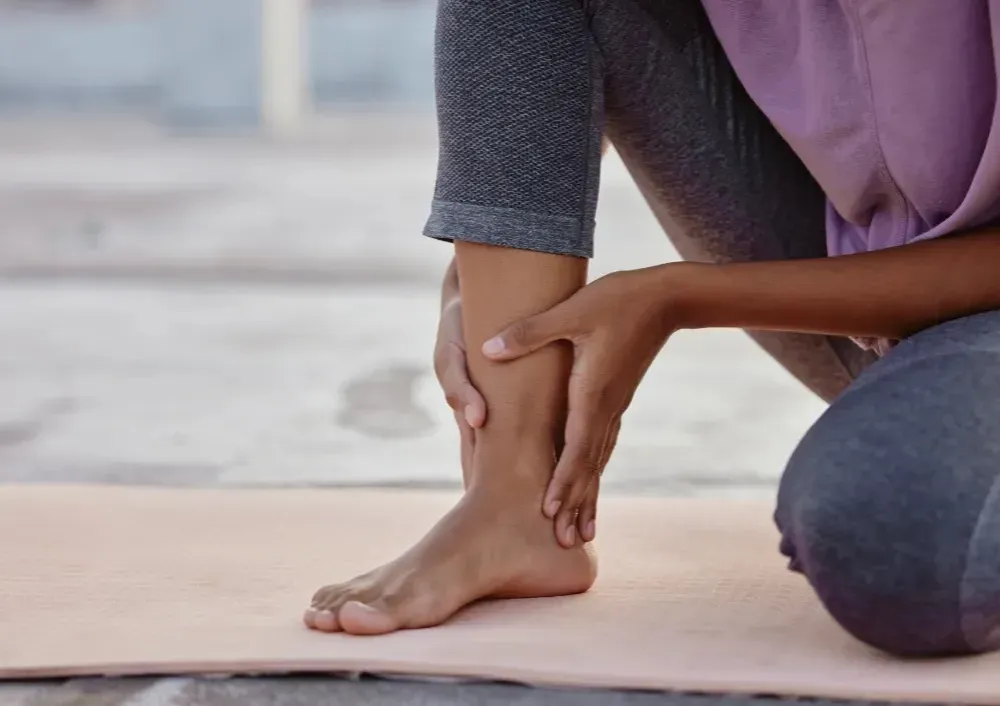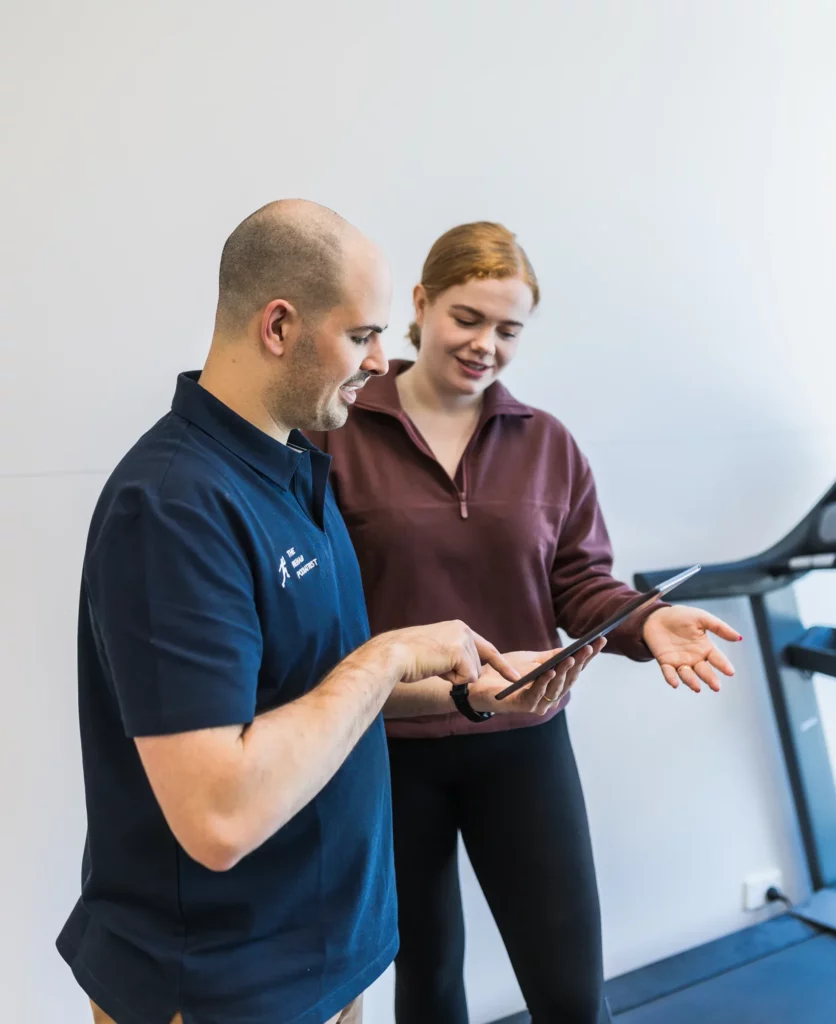Tendon Pain

Symptoms
People with tendon pain experience pain when they first stand up, often feeling quite sore and stiff until they start moving. Pain can return after doing sport or physical activity, especially if they’ve done movements like jumping, sprinting or changing direction/cutting.
Previously thought to be caused by inflammation, it’s now known to be a biochemical change in the tendon which makes it irritated by movement, often in response to suddenly moving more than the tendon could cope. This can be in people pushing themselves too hard, or a reduction in the tendons ability to cope from medical conditions such as diabetes and other metabolic conditions.
It can start after a sudden jarring, trauma or twisting movement during sport/exercise. However, for most people, one day they’ll start noticing it becoming sore, which will get progressively worse over time.
Because of the delayed onset/nature of the pain, it often causes people a lot of confusion and concern, with them finding it difficult to identify the exact amount or type of activity that causes the pain.
Tendons can be a very frustrating condition to suffer from as it’s not uncommon for people to experience pain inhibition, which is where the pain limits how much your tendon tolerates movement, making the foot and ankle feel weak performing certain movements. The condition can also stick around for a long period of time, despite only be
There are a number of tendons across your foot and ankle that can become painful. Common areas include:
- Back of the ankle (achilles tendon)
- Inside of your ankle and foot (posterior tibial tendon)
- Outside of your ankle and foot (peroneal tendon)
- The top of your foot, from around your toes to your ankle (extensor tendons)
- The bottom of your foot, from around your toes to the inside of your ankle (flexor tendons)
- The heel (plantar fascia, which isn’t a tendon, but is often treated similarly – see “heel pain”)
While movement is often sore, tendons don’t like to be completely rested. They also respond really well to strength exercises. Depending on the severity of the condition, often it’s safe and beneficial to continue exercising with a small amount of pain.
How our services can help with this condition
If you’re suffering from pain in your feet and ankles, I’ll first perform a thorough injury assessment and determine whether you’re suffering from tendon pain and if so in which tendon. For some people, we may need to consider ordering a scan of the tendon and surrounding area which can be helpful at identifying if it is the tendon affected or another condition, as well as the type and amount of change there is in the tendon.
As part of this assessment I’ll perform a series of movement tests to help identify if the way you move is contributing to your condition (which is very important for specific tendons, e.g. posterior tibial tendon), as well as the type and amount of movement you can tolerate.
I’ll go through all the findings with you, give you an honest prognosis of your condition and together we’ll formulate a comprehensive treatment plan. This will often include:
- Guiding you on how you can remain active throughout your recovery
- Prescribe and coach you through exercises that will restore comfort, strength and movement in your feet and ankles
- Prescribe you footwear that can aid your recovery
- Provide you with things that can reduce tendon irritability e.g. foot orthoses, in-shoe padding
There are a number of ‘adjunct’ or supplementary treatments, which for a small number of people may be helpful at speeding up recovery, or reducing irritation to make exercise more tolerable. These includes injections (cortisone) and extra corporeal shockwave therapy (also known as ECSWT or simply ‘shockwave’).
I don’t provide these adjunct treatments in my clinic, instead, I’ve built relationships with other providers who specialise in these treatments to get the best outcomes for everyone. If I think you’re one of the people who’ll benefit from an adjunct treatment, I’ll able to provide you a specific referral for this treatment.

